Having trouble figuring out how to use Midjourney like a pro? Looking for a Midjourney Cheat Sheet? If yes, then you must read this article till the end. In this detailed guide, we’ll give you a Midjourney commands list, parameters, codes, cheats, etc, so you can use this one of the best AI image generators to its maximum potential.
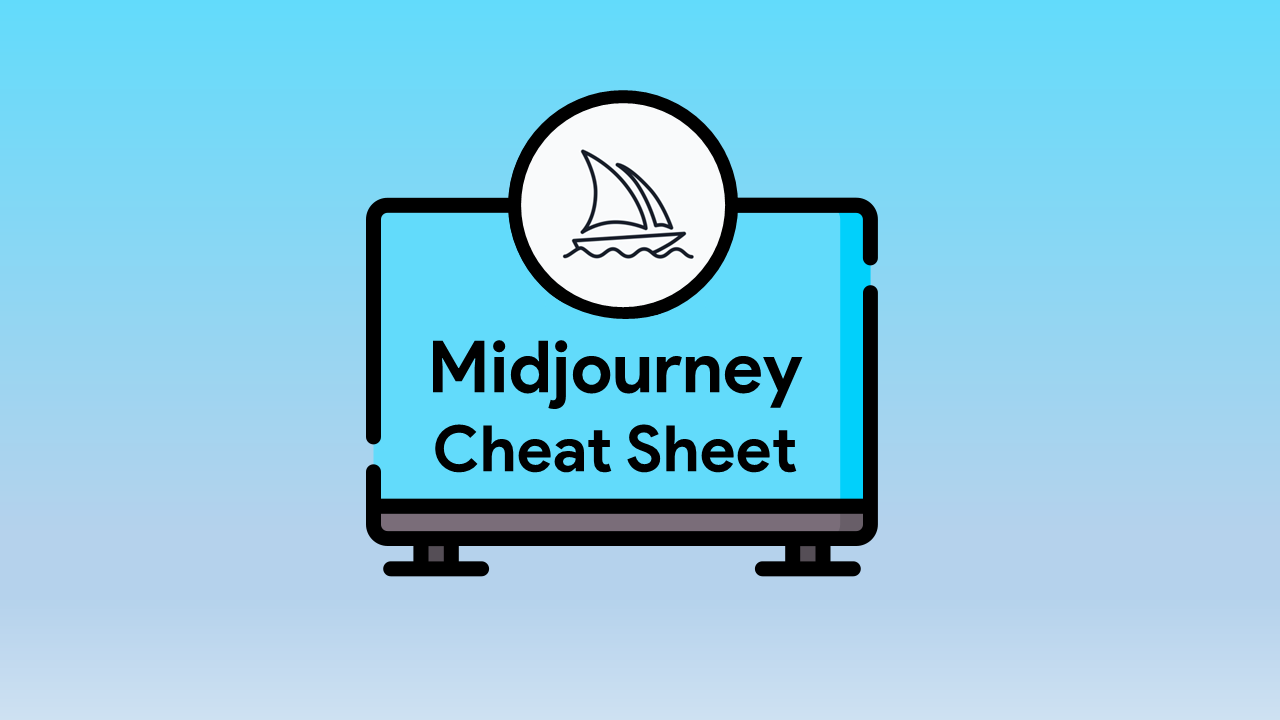
For those who don’t know the difference between Midjourney Parameters And Commands / Codes.
In Midjourney, when you want to make changes, there are two things you can use: Parameters and Commands.
Midjourney Parameters: Parameters begin with “–” and are like special settings for specific Midjourney prompts. They’re not exactly the same as commands.
Midjourney Commands: Commands start with “/,” and they’re used to change Midjourney’s overall settings. These changes will affect all the things that Midjourney generates, like making everything private or adjusting how fast it generates text.
Table Of Contents 👉
Midjourney Cheat Sheet PDF (V5.2)
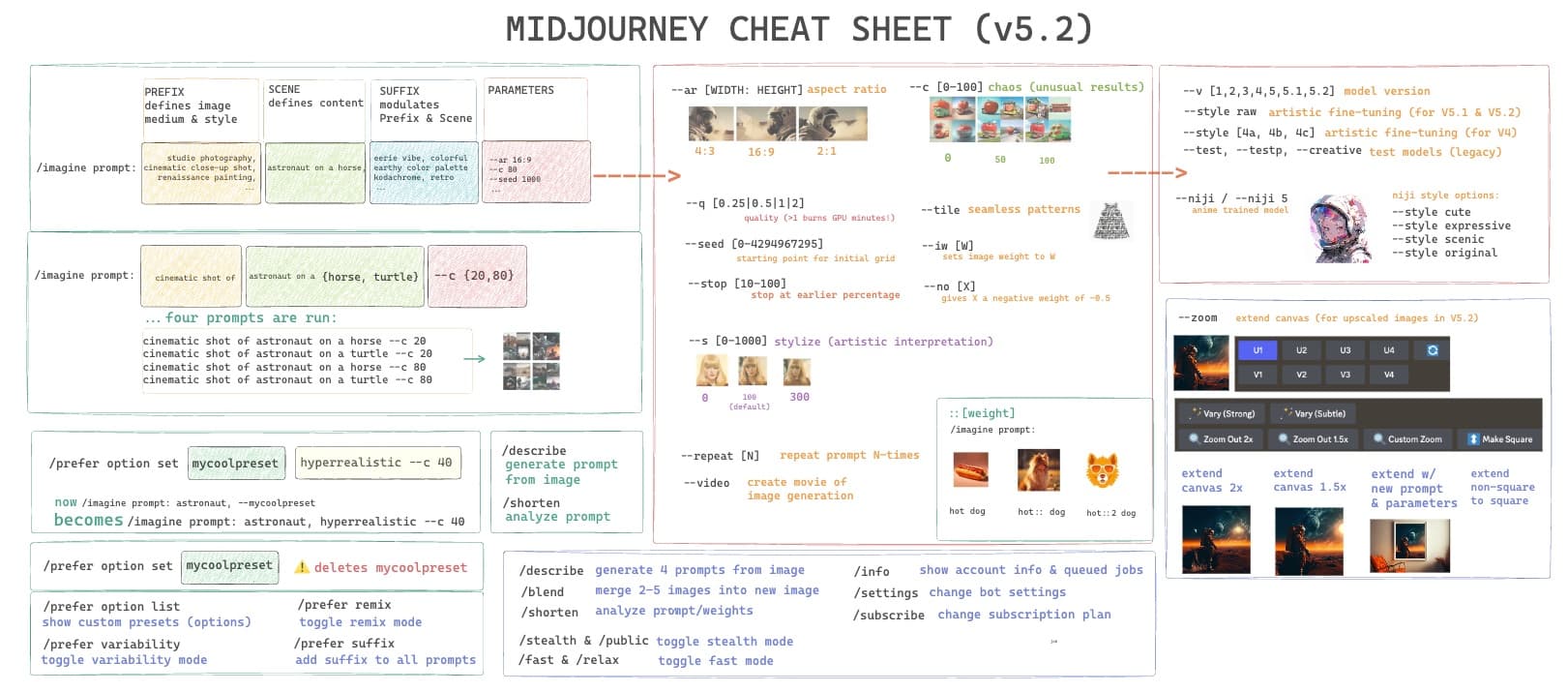
Related Stories:
Midjourney Commands List
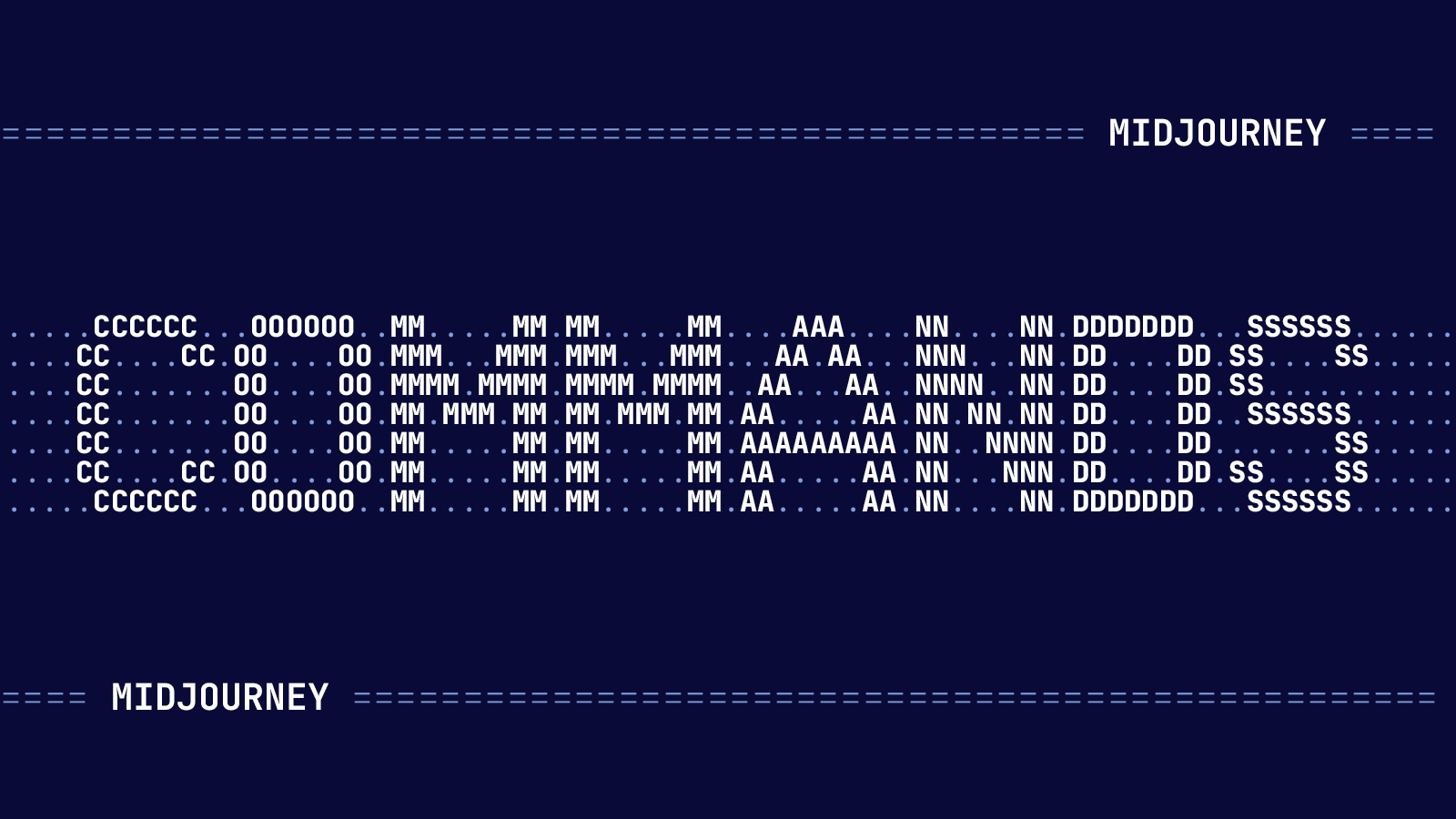
/imagine: Create an image based on a text prompt.
/fast, /relax: Control the speed of image production
/daily_theme: This midjourney command will help you to stay up to date about new daily-theme channel updates.
/subscribe: It is used to subscribe to any plan of Midjourney’s plans.
/info: This command displays the details of the plan, visibility, job mode, relaxing time usage, and details about jobs such as running jobs and queued jobs.
/ask: It acts as a real-time saver; if you want to know any details about Midjourney, use this command.
/help: This command is used for overall help required while navigating the Midjourney infrastructure.
/show: It helps to load your work, or in another way, we can say use it to load your pre-existing generation inside the Midjourney.
/settings: By using this command, you can adjust the personal setting and change Midjourney versions, their quality, style, etc.
/private: This command sets your image generation jobs to private.
/public: All jobs are publicly visible.
/settings: This command displays the visual settings menu.
/prefer suffix: Adjusts non-visual parameters with the /prefer suffix.
/prefer suffix< text>: This command adds a specific suffix to each prompt.
/prefer auto__dm: It is preferable. True: Sends created photographs to your Direct Messages automatically.
/prefer option set< name>< value>: As with keyboard shortcuts, this option sets a shortcut to a value.
/prefer option list: Displays a list of your top choices.
/blend: This command was used to combine two photos. The /remix command has taken its place.
/describe: This command was used to generate an image description. The Midjourney online app has been superseded by the /describe feature.
/faq: The Midjourney FAQ was accessed with this command. The /help command has taken its place.
/info: This command was used to get information about your current queued and running jobs, subscription type, renewal date, and more. It has been replaced by the /info feature in the Midjourney web app.
/stealth: This command was used to toggle stealth mode. It has been replaced by the /stealth setting in the Midjourney web app.
/preferential option list: This command was used to choose an argument from a list. It has been superseded by the Midjourney web app’s preference settings.
/prefer suffix: This command specifies a preference for a suffix that will be appended to the end of all prompts. It has been superseded by the Midjourney web app’s preference settings.
/prefer variability: This command was used to specify a preference for variability.
/remix: This command was used to create a new image from an old one. It has been superseded by the Midjourney web app’s /remix feature.
/shorten: This command was used to make the prompt shorter. The prompt editor has taken its place in the Midjourney online app.
/show: This command was used to display the created image. The image viewer in the Midjourney online app has taken its place.
/turbo: This command overrides the default mode and generates an image in turbo mode. The Midjourney online app has been superseded by the /fast setting.
Related Stories:
Midjourney Parameters List
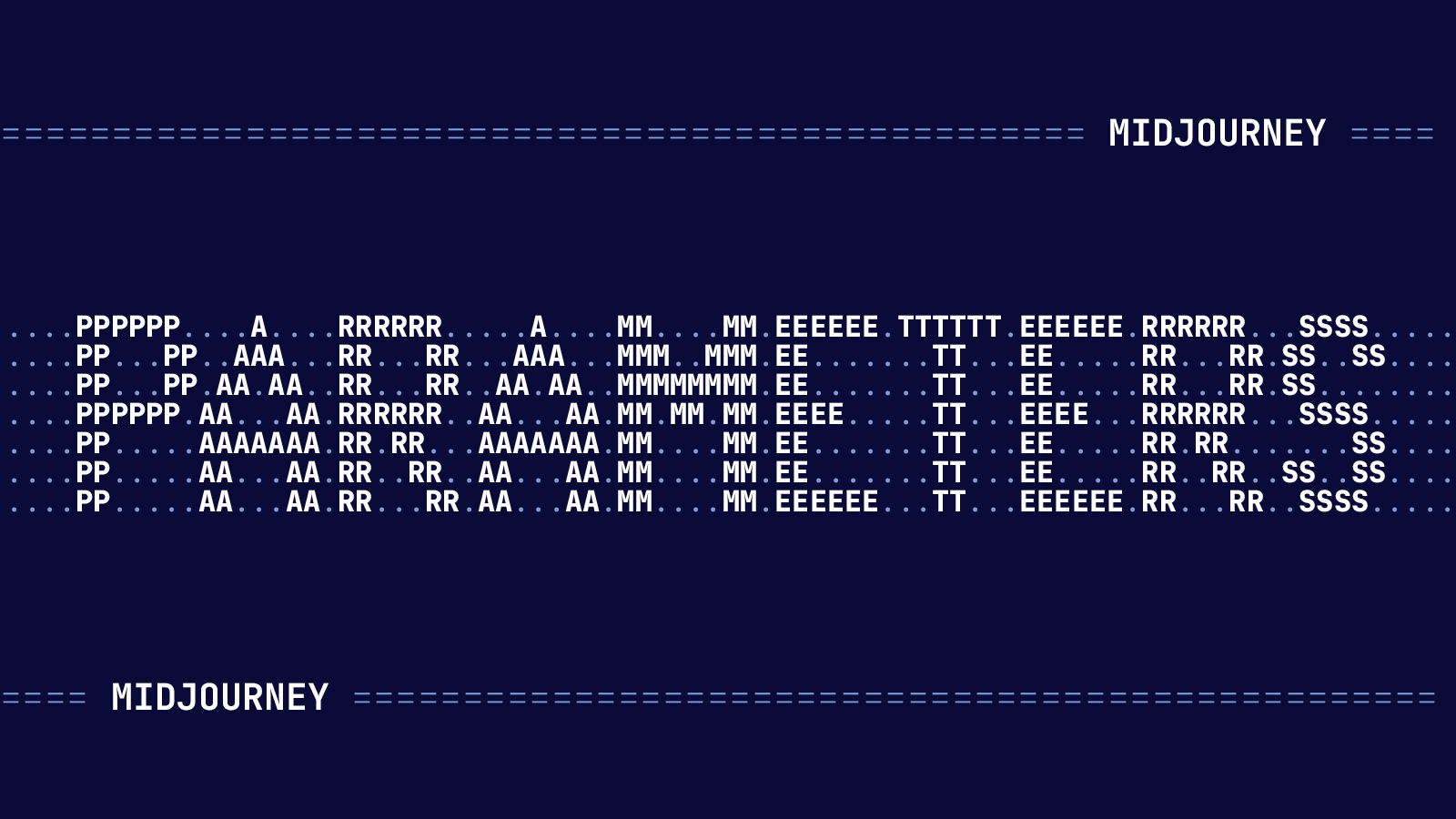
–aspect: Modify an image generation’s aspect ratio.
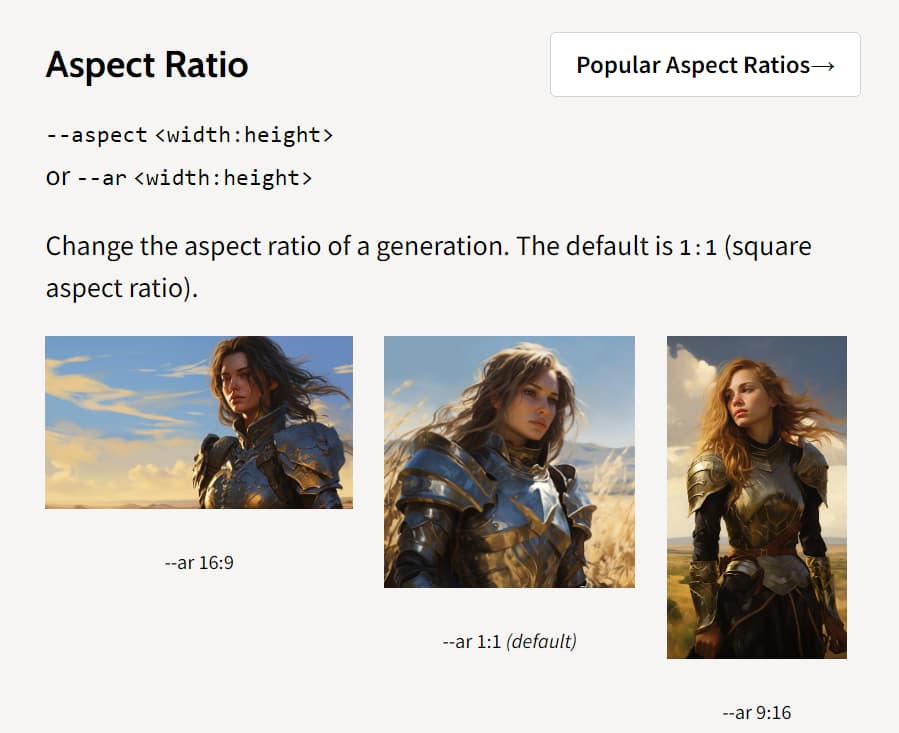
–seed: A seed value is specified for image generation. In Midjourney, the word “seed” refers to the random number generator seed that is utilized to generate an image. This means that you will get the same image if you use the same seed value and prompt.
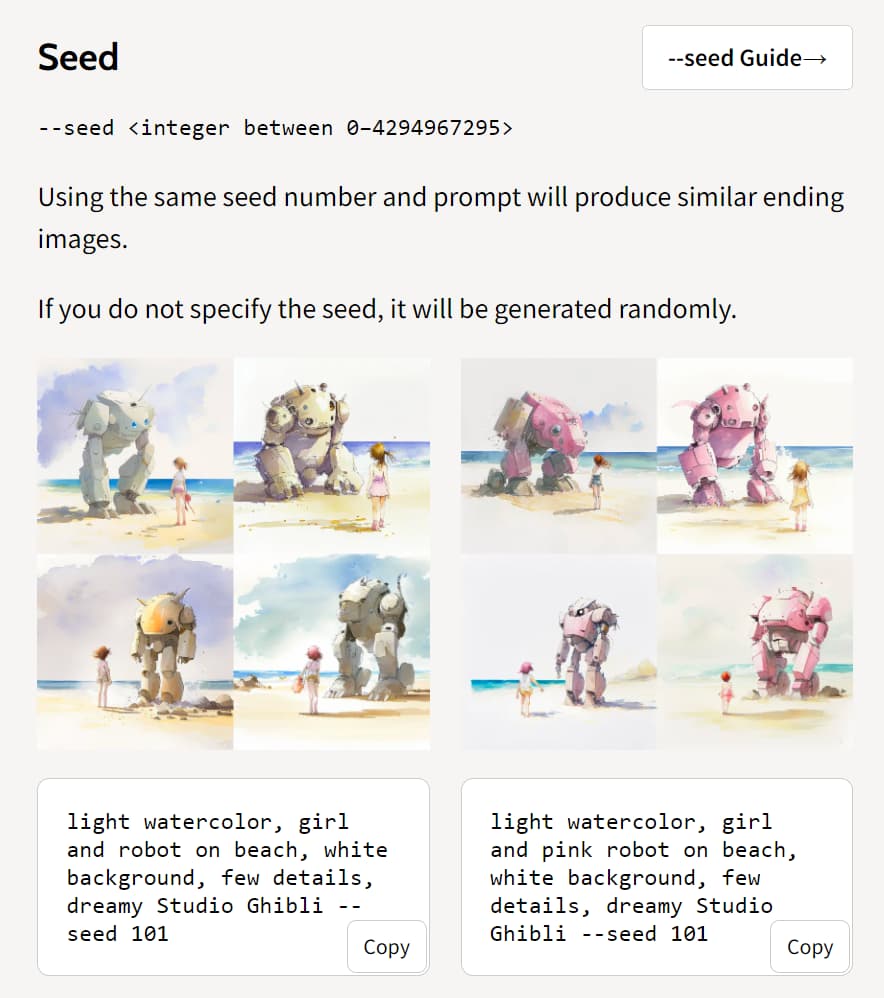
–chaos: Modify how diverse the findings will be.
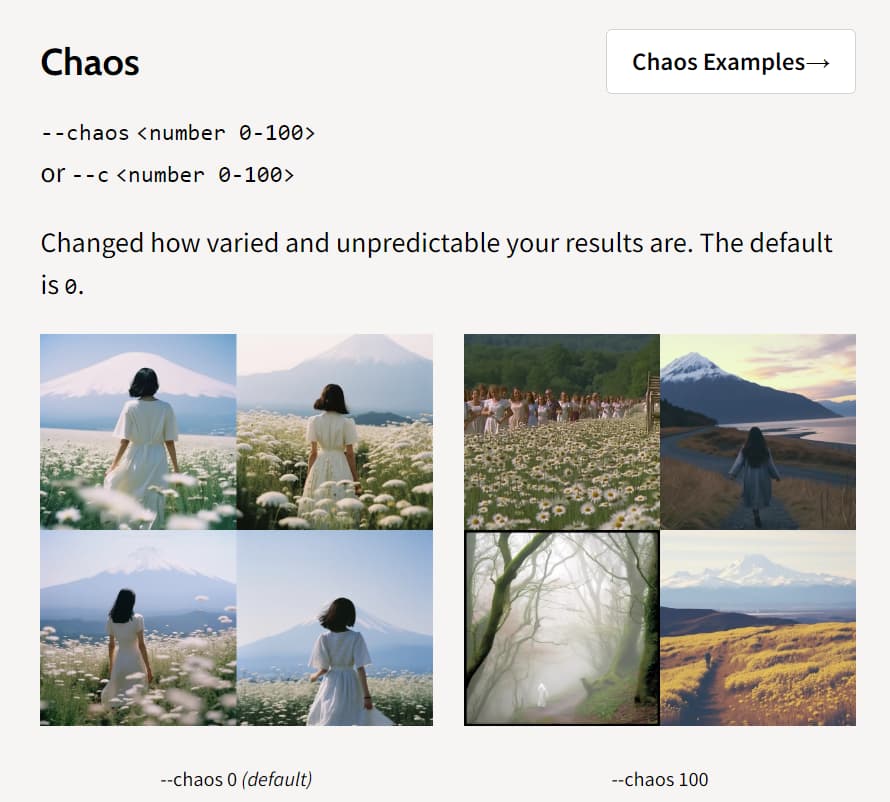
–no: Negative prompting, –no plants, would attempt to eliminate plants from the image.
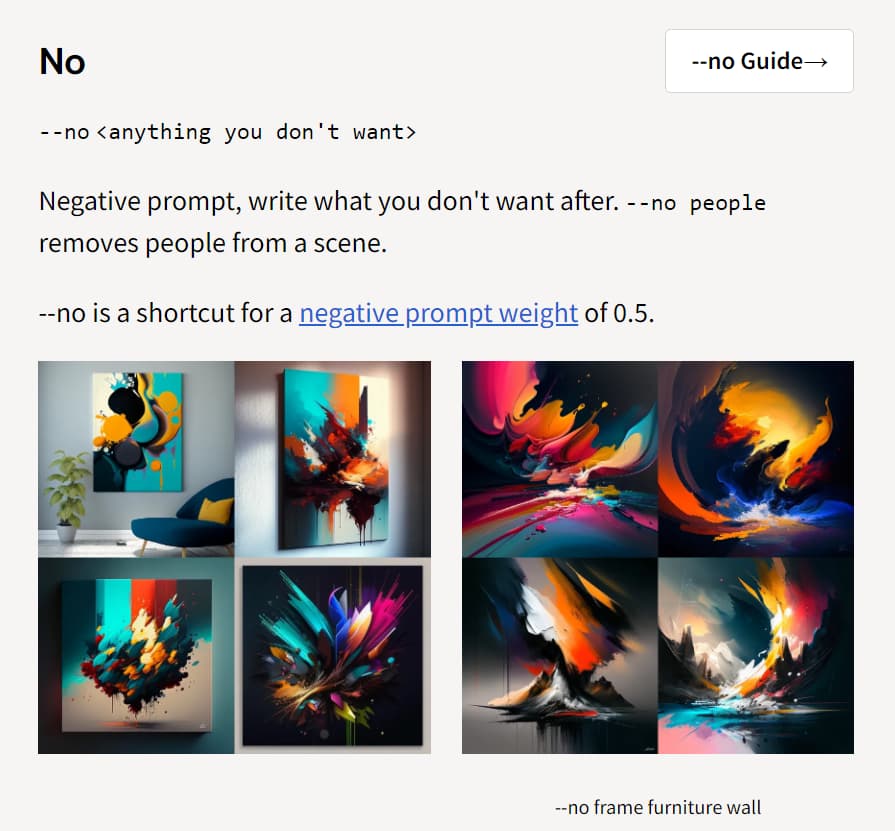
–quality: Defines the resolution of the output image.
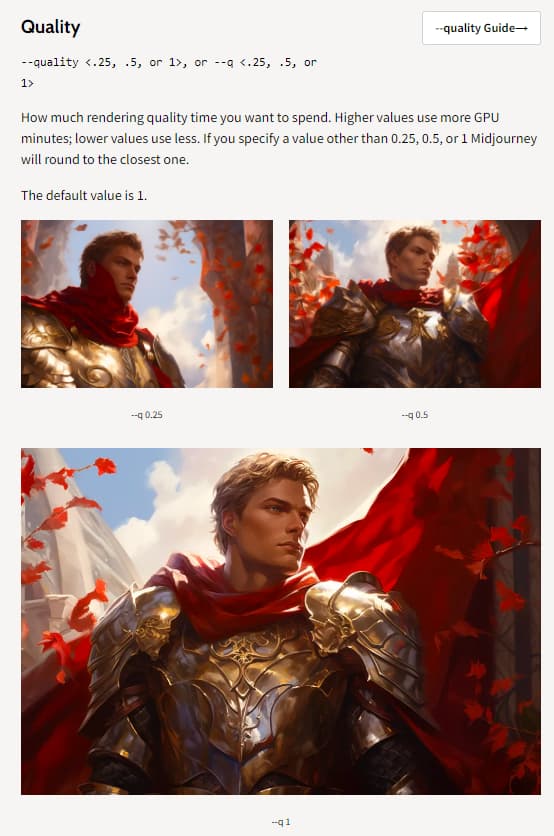
–iw: Change the image prompt’s weight about the text prompt. The /iw is an abbreviation of “image weight”. In Midjourney, the /iw command is used to change the significance of the image prompt about the text prompt.
The default value is 1, indicating that the image and text cues are equally weighted. Higher /iw values give more weight to the image prompt, while lower values give more weight to the text prompt.
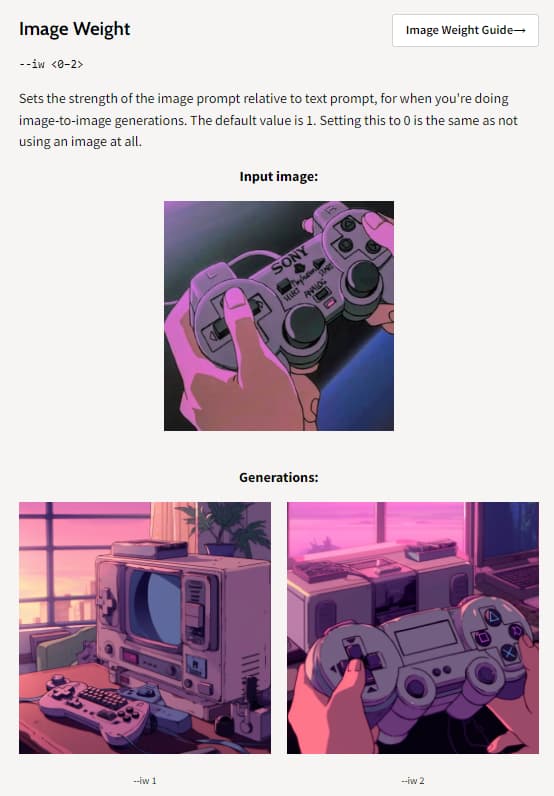
–repeat: From a single prompt, create several Jobs.
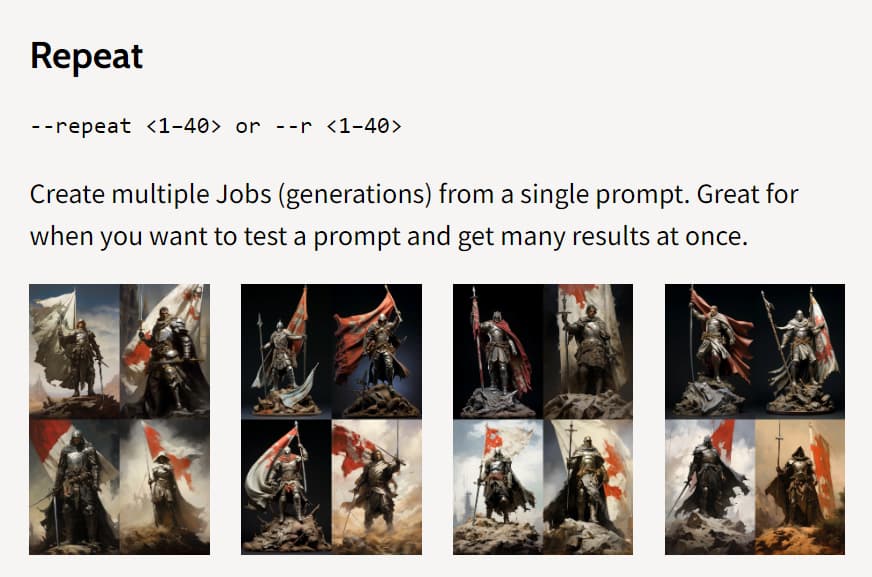
–relax: Replace your current setting with Relax Mode and execute a single job.
–stop: You can use “–stop” to end a job before it’s complete. If you stop it too soon, the results might be less clear and detailed.
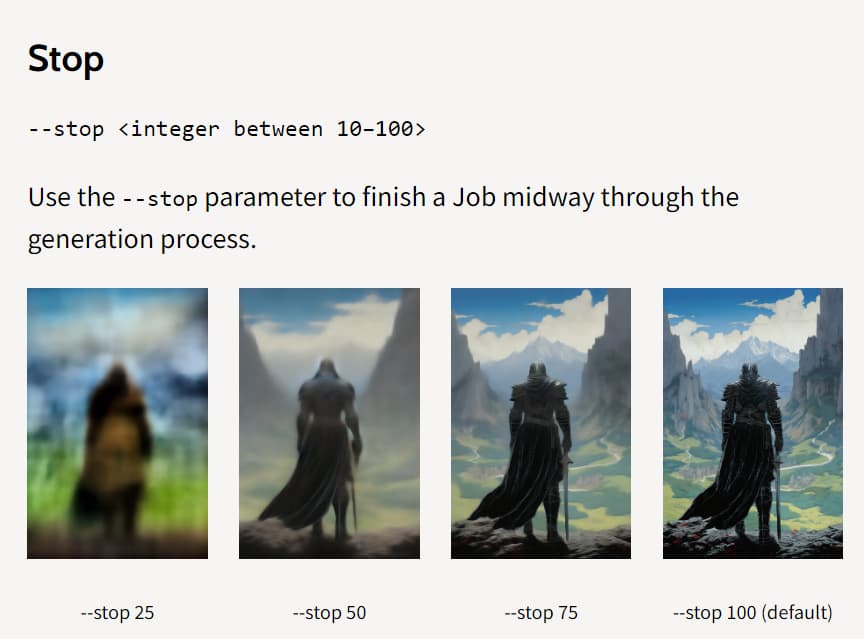
–no: Remove some elements from the resulting image.
–aspect or -ar: Specify the generated image’s aspect ratio.
–version or –v: Create various variations of an existing image
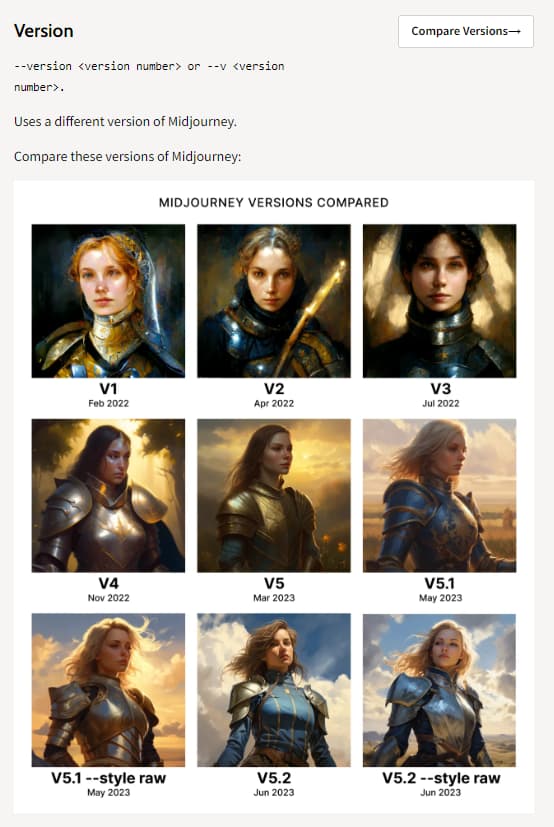
–style: Set the style of the created image with this command.
–u (u1/u2/u3/u4): Used to enlarge the image while maintaining its quality.
–stylize: Stylize the created image using this command.
Related Stories:
Let’s dive into the details of each midjourney parameter
1. Image Parameters
Midjourney commands use parameters to control the image production process. They can be appended to a prompt to adjust the aspect ratio, style, quality, and other features of the created image.
Simply add a parameter to the end of your prompt, followed by a double hyphen (–). To create an image in the manner of Vincent Van Gogh, for example, use the following prompt:
–style Elon Musk
The advanced parameters of Midjourney’s imagine command allow you to fine-tune the image production process. These settings can be used to modify the resulting image’s aspect ratio, style, quality, and other factors.
Here is the list of advanced parameters of the image command:
–aspect (or –ar): Change the aspect ratio of the resulting image using the –ar command
–chaos (or –c): Modify the amount of variation in the outcomes. Higher –chaos values generate more diverse results, whilst lower values produce more consistent results.
–iw (or –image_weight): Adjusts the image prompt weight about the text weight. Higher –iw values give more weight to the image prompt, while lower values give more weight to the text prompt.
–no (or –negative_prompt): This is useful for removing specific elements from the resulting image.
–quality (or –q): Set the quality of the resulting image with the –quality (or –q) option. Higher–quality values provide higher-quality photos but take longer to generate.
–relax (or –r): Override your existing configuration and execute a single job with the command.
Below there is one example to illustrate it:
2. Stylize Parameters
Midjourney’s stylize command’s advanced options let you customize the level of stylization applied to the output image. These factors can be used to make images that are more or less styled, as well as to regulate certain components of the stylization process.
The list given below shows the advanced parameters of Stylize commands:
–stylize_weight (or –sw): Sets the overall strength of the stylization. Higher values for –stylize_weight will produce more stylized images, while lower values will produce less stylized images.
–style_scale (or –ss): It sets the scale of the stylization. Higher values of –style_scale will give larger and more pronounced stylization effects; on the other hand, lower values will produce smaller and less pronounced stylization effects.
–style_detail (or –sd): It is used to set the detail of the stylization. the higher value of this command will produce detailed and intricate stylization effects, whereas lower values give less detailed and intricate stylization effects.
–style_contrast (or –sc): Sets the contrast of the stylization. Higher values of the –style_contrast command give more contrasted and vibrant stylization effects; on the other hand, lower values will produce less contrasted and less vibrant stylization effects.
–style_brightness (or –sb): This command sets the brightness of the stylization. When the value is increased for –style_brightness, it produces brighter stylization effects, while lower values will give darker stylization effects.
–style_saturation (or –sat): It is used in setting the saturation of the stylization. Its higher value will produce more saturated and colorful stylization effects, whereas lower value gives saturated and less colorful stylization effects.
–style_hue (or –hue): Sets the hue of the stylization. Higher values for –style_hue wii give stylization effects with a more reddish hue; on the other hand, lower values will produce stylization effects with a more greenish hue.
3. Quality Parameters
The –quality or –q argument is the single advanced parameter of the quality command in Midjourney. It allows you to fine-tune the resulting image’s quality.
A lower quality number will produce a coarser and less detailed image, and it will generate and utilize fewer GPU minutes faster. On the other hand, higher quality value results in a more detailed and polished image, but it takes longer time to generate and consumes more GPU minutes.
The quality value can be adjusted between 0.25 and 5, although values greater than 1 are rounded down to 1.
The advanced parameter of quality commands is explained below:
–quality 0.25: Creates a low-resolution image. This is a fantastic alternative if you need a speedy result or want to save GPU minutes.
–quality 0.5: It creates an image of medium quality. For the most part, this is an excellent option.
–quality 1: It generates an image of excellent quality. If you want the most thorough and finished results, this is the best option.
–quality 5: It creates an extremely high-quality image. This is the most expensive choice, and it is only suggested if the greatest quality is required.
4. Text Weight Parameters
Text weights are used in Midjourney instructions to control the relative relevance of certain words or phrases in the prompt. This can be used to change the focus of the generated image or to create more complicated and nuanced prompts.
Given below are some advanced parameters of the Text weight commands:
–tw_weight: You can use this parameter to define a global weight for all text weights in your prompt. The default setting is 1.
–tw_normalize: This argument specifies whether text weights should be normalized. When text weights are normalized, the total weight of all text weights equals 1. True is the default value.
–tw_negative: It specifies whether negative text weights are permitted. When negative text weights are supported, you can use them to suppress specific words or phrases in the resulting image. False is the default setting.
5. Model Version Parameters
Midjourney model version settings allow you to transition between multiple versions of the Midjourney model. Each model version has its own set of advantages and disadvantages; thus, it is critical to select the appropriate model version for your prompt.
–version or –v: The model version to be used.
–model: The model version to be used. This parameter is obsolete and will be deprecated in the future.
–models: A list of model versions to utilize is specified. Based on the prompt and the other factors supplied, the Midjourney server will choose the optimal model version from the selection.
–test: Use the Midjourney special test model for testing.
–testp: Use the Midjourney photography-specific test model.
–niji: A different model that focuses on anime-style imagery.
6. Upscale Parameters
–upscale_weight: This parameter controls the strength of the upscaling. A higher value will produce a more upscaled image, but it will also require more GPU minutes.
–upscale_method: This parameter controls the upscaling algorithm that is used. The available options are nearest, bilinear, and bicubic. Bicubic is the default option and produces the best results, but it is also the slowest.
–upscale_sharpen: This parameter controls the amount of sharpening that is applied to the upscaled image. A higher value will produce a sharper image, but it may also introduce artifacts.
Creative AI art tools like Midjourney, Stable Diffusion, Canva AI, and AutoDraw are fantastic for creating beautiful artistic work.
Midjourney commands list and parameters make your work easier and enhance your experience. Right commands at your fingertips will make your easier, and the output will show the full potential.
Using its given prompts, you can create great visuals, and numerous possibilities are increased after introducing more advanced parameters.
This will increase the quality of projects and make your work reach great heights. Get through all the midjourney commands/parameters, and you will realize the real potential of Midjourney AI.
Note: The credits for some of the images used in this article go to Tristan Wolff, Midjourney, and Yubin Ma.
Related Stories:
